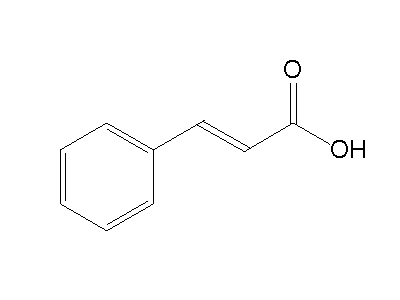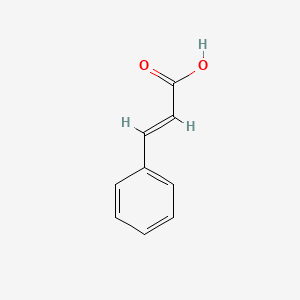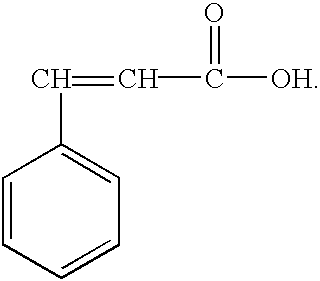Formula C9H8O2 Density 1.25 g/cm³ Appearance White monoclinic crystals | Molar mass 148.1586 g/mol Boiling point 300 °C | |
 | ||
Making cinnamic acid
Cinnamic acid is an organic compound with the formula C6H5CHCHCO2H. It is a white crystalline compound that is slightly soluble in water, and freely soluble in many organic solvents. Classified as an unsaturated carboxylic acid, it occurs naturally in a number of plants. It exists as both a cis and a trans isomer, although the latter is more common.
Contents
- Making cinnamic acid
- Lab practicum project greener bromination of trans cinnamic acid
- Natural occurrence
- Production
- Uses
- References
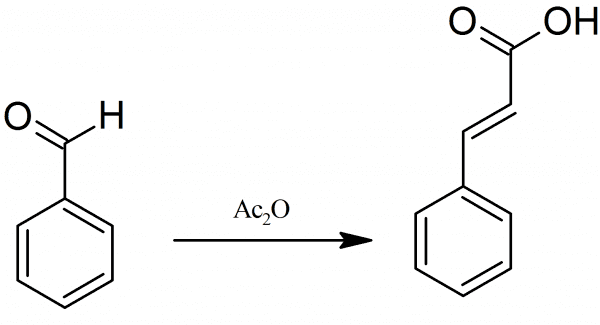
Lab practicum project greener bromination of trans cinnamic acid
Natural occurrence
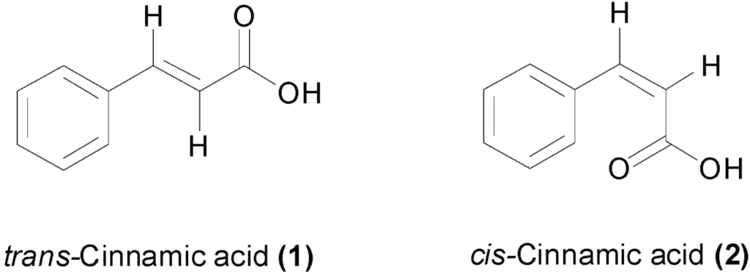
It is obtained from oil of cinnamon, or from balsams such as storax. It is also found in shea butter. Cinnamic acid has a honey-like odor; it and its more volatile ethyl ester (ethyl cinnamate) are flavor components in the essential oil of cinnamon, in which related cinnamaldehyde is the major constituent. Cinnamic acid is also part of the biosynthetic shikimate and phenylpropanoid pathways. Its biosynthesis is performed by action of the enzyme phenylalanine ammonia-lyase (PAL) on phenylalanine.
Production

The original synthesis of cinnamic acid involves the Perkin reaction, which entails the base-catalysed condensation of acetic anhydride and benzaldehyde. Rainer Ludwig Claisen (1851–1930) described the synthesis of cinnamate esters by the reaction of benzaldehyde and esters. The reaction is known as the Aldol condensation (with accompanying hydrolysis of the anhydride). It can also be prepared from cinnamaldehyde and benzal chloride.
Uses
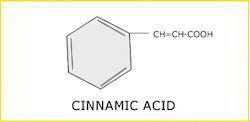
Cinnamic acid is used in flavors, synthetic indigo, and certain pharmaceuticals. A major use is in the manufacturing of the methyl, ethyl, and benzyl esters for the perfume industry. Cinnamic acid is a precursor to the sweetener aspartame via enzyme-catalysed amination to phenylalanine. Cinnamic acid can dimerize in non-polar solvents resulting in different linear free energy relationships
